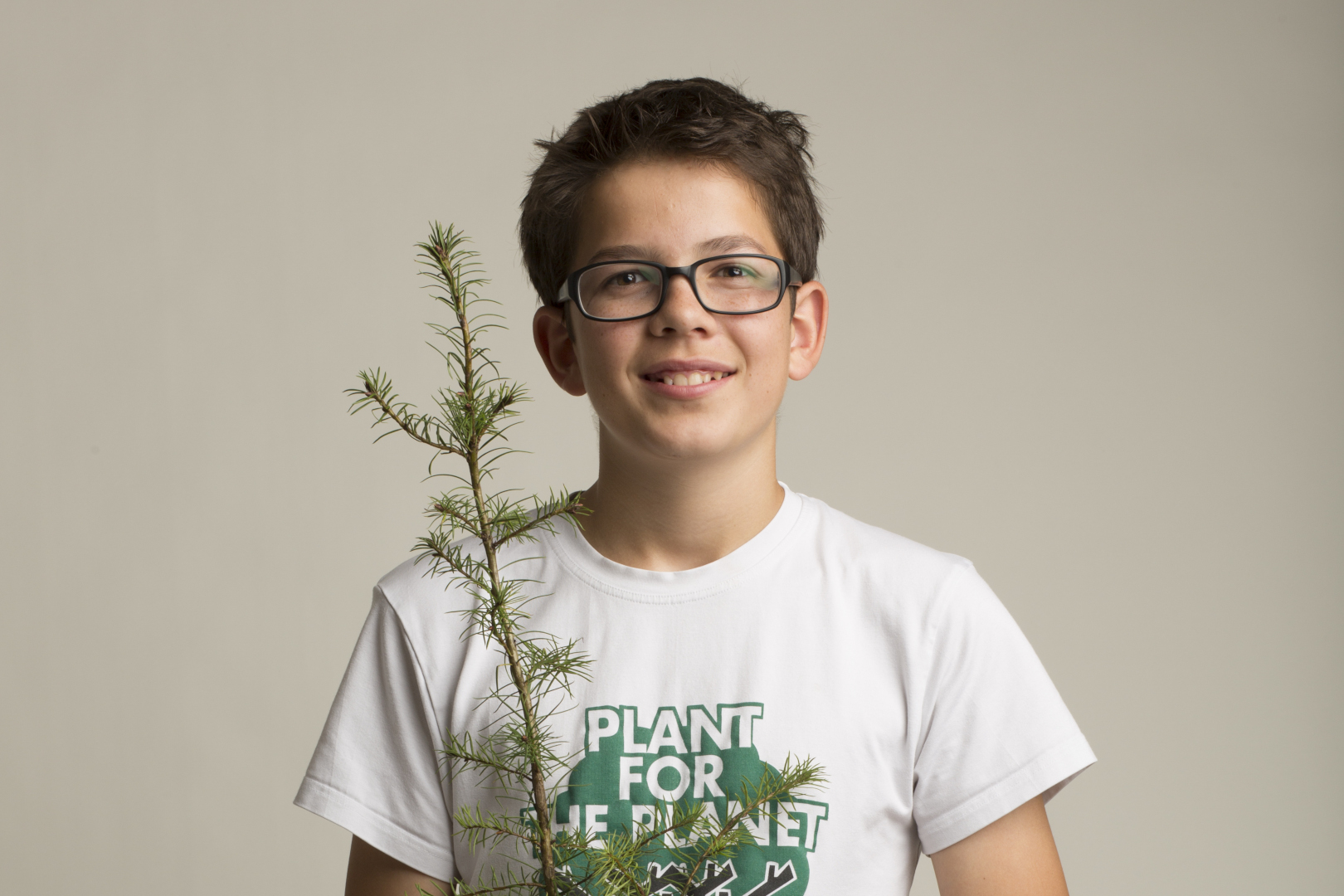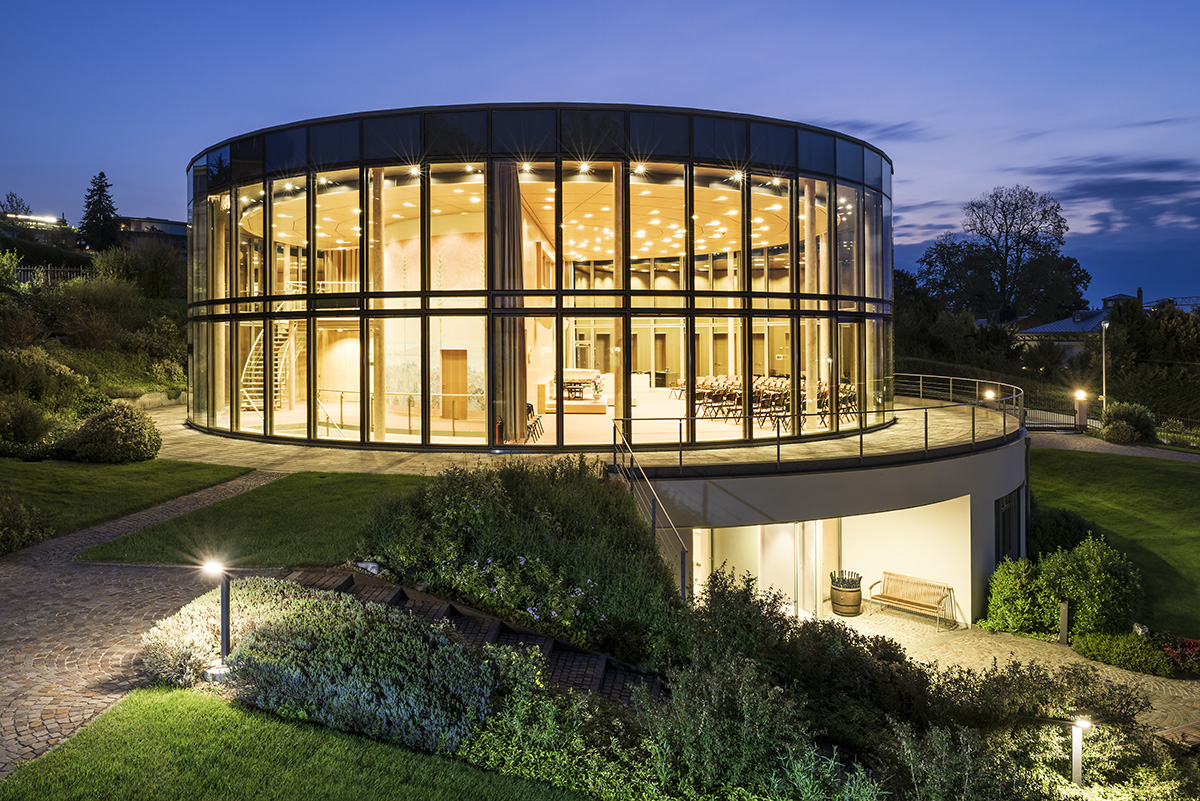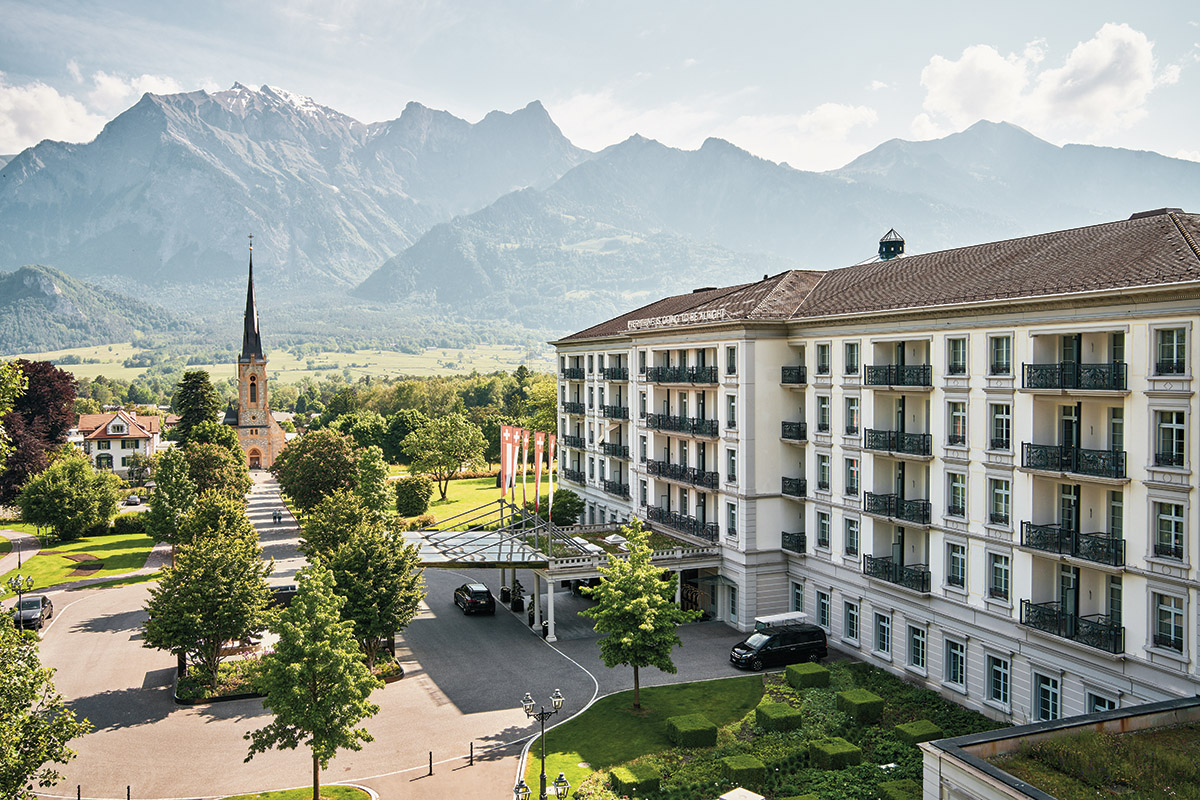‘Stop talking, start planting’

Exactly ten years ago, a nine-year-old boy from Germany decided that more action had to be taken to counteract climate change. Thus, he initiated the children’s initiative ‘Plant-for-the-Planet’. What started off as a simple school project, turned into a global movement that is on course to plant its one billionth tree.
Felix Finkbeiner can indeed be called a ‘wunderkind’. While many of his peers would have still been pre-occupied with playing football, Felix had a higher goal at the young age of nine: saving the planet from global warming. He recollects: “Adults simply have done way too little. The data is shocking. Since the Kyoto Protocol was passed, worldwide CO2 emissions have increased by 62 per cent. Back then I had the impression that adults merely talked about the climate crisis but that they didn’t undertake anything. Whether the sea level will rise by four or seven metres is a scientific question for adults. When this will actually happen, most of them won’t live anymore. But us children and adolescents, we will actually experience the climate crisis’ dramatic effects.”
From school project to global campaign
In January 2007, Felix’s teacher came into the fourth grade with an important issue. She was concerned about the mild winter and told Felix and his classmates to think about the important topic of climate. “I decided to prepare a presentation. While researching for information, I came across the Nobel Peace Prize laureate Wangari Maathai. She planted around 30 million trees in 30 years in many African countries. Then it occurred to me: what if the low number of adults that advocates a different treatment of the earth doesn’t persuade enough other people to rethink? At the end of my presentation, I told my classmates: Let’s plant one million trees in each country of this planet!” says Felix. This was certainly achieved… and more. In fact, around 14,210,000,000 trees have been planted all over the globe – and the number increases by the minute.

Felix Flinkbeiner at the UN in New York.
But how exactly did Felix’s initial idea become a hit all over the globe? After his presentation went down a treat with his classmates at the Munich International School, his teachers wanted him to repeat his speech in front of the school’s student council. Shortly after, he also gave the speech in front of other classes. It did not take long before his campaign reached other schools and Felix received more and more calls from students that were keen to join Plant-for-the-Planet. The project quickly gained traction. In fact, it became so popular that, at the age of nine, Felix decided to ask Toyota for €40,000 so that he could hire his first full-time staff member. With not much negotiating efforts, Toyota said ‘yes’ and with the money Felix kept campaigning and gave speeches so that his commitment started to snowball.
Felix attended the UN Children’s Conference in Stavanger, Norway in 2008, became a UNEP (UN Environment Programme) Junior Board Member, gave a speech in front of the European Parliament and in 2011, even addressed the United Nations in their headquarters in New York. “I was never as nervous before! Right before the speech I really wished that I would sit in school instead,” Felix laughs. Another big factor that gained the Plant-for-the-Planet far-ranging recognition, is an advertising campaign with the likes of Harrison Ford, Prince Albert of Monaco or Gisele Bündchen. With those famous helpers, it seems no wonder that Plant-for-the-Planet is now known all over the world. Felix says: “When I was nine and prepared a presentation for my school, I actually only did my homework. Of course, I didn’t expect that it would turn into a student initiative that would grow into a global movement. I think it became so popular because many children have the same fears as I do – they simply don’t want to just watch while adults gamble away our future.”

Protesting. Photo: © Michael Setzpfandt
One answer to climate change
The concept behind Felix’s idea is quite simple. First of all, Plant-for-the-Planet academies are organised in Germany and around the world. These events are organised by children for children at which they motivate each other to take action against the climate crisis. The children then become active Climate Justice Ambassadors and pass on their knowledge to encourage other children. Simple, yet very effective. Today, Felix is 19 years old and more than 100,000 children follow Felix’s mission, while 55,000 children between the age of nine and 12 are Ambassadors for Climate Justice. Day by day, these numbers are rapidly growing so that it becomes obvious that Plant-for-the-Planet developed into a well-organised, global movement with the ultimate goal of planting one billion trees worldwide.
But why trees? According to Felix, trees provide a good time joker for the fight against the climate crisis. “They are the simplest and cheapest option, as well as safe carbon reservoirs. When they grow, they withdraw CO2 from the atmosphere. This way, they mitigate the climate crisis. Until 2050, we have to reduce our greenhouse gas emissions to zero in order to still comply with the two-degree threshold. Otherwise, the consequences will be catastrophic. Adhering to the two-degree threshold will only be successful with massive reforestation,” he explains and adds: “Our goal is to plant one billion trees. According to first estimates, they would absorb a quarter of the annual man-made CO2 emissions – annually. But planting one billion trees will achieve even more: jobs and thus, perspectives for people in the global south. Furthermore, trees are a regenerative, natural raw material source that additionally stores carbon and thus, reduces CO2 in the atmosphere.”
When a tree rots, carbon is released again and connects with oxygen – and the newly bound CO2 is back in the air. However, when the wood is sensibly used in the long term, it can store the carbon. For example, a wood house could replace concrete. What many do not know, according to Felix, is that the worldwide cement production for all of the concrete that we need releases three times as much CO2 than air traffic all over the globe.
The prospect of planting one billion trees around the world is a great one, but with climate change deniers gaining more and more traction – even on a political level – the campaign also must overcome some obstacles. But Felix is confident. “It is important that people understand that no matter what my conviction, when I become active against the climate crisis today, then I assume responsibility for people that are important to me. Almost everyone has children or adolescents in their surroundings. One thing is for sure: these children and adolescents will experience the climate crisis’ consequences. Droughts, floods, conflicts. For example, a long-standing drought that brought about chaos in the general public, preceded Syria’s civil war. That’s a factor in this war. A NASA study showed: these droughts were connected to the climate crisis. The impacts of global warming are measurable and already here in certain regions of the world. However, in 50 years, worldwide. Then, today’s European children will also be affected. That’s why we all have to act now,” notes Felix.

Ambassadors in the Philippines.
‘Believe in your idea’
At the young age of 19, Felix has already achieved a great deal. He was named European of the Year by Reader’s Digest in 2015, he currently studies International Relations in London and, of course, Plant-for-the-Planet is further gaining more momentum. Felix explains: “We still have a very ambitious target to reach: until 2020, companies, organisations, governments and individuals should promise us one billion trees. Furthermore, we want to train one million children to become Climate Justice Ambassadors. Of course, we need a high degree of support for this and a large number of people that jointly want to stand up for our future.” So, what can each and every one of us do? Felix answers: “Everyone can do something for climate protection. For example, switch to a green energy provider. But it’s important to have a closer look: it is only effective when one switches to a provider that actually invests in new wind turbines, photovoltaic plants, hydroelectric power plants and so on. Of course, one should also question their own behaviour: eat less meat, if possible, waive the car or the plane, build ecologically, such as with wood. And, of course: plant trees! One can do that very easily with a donation: for one euro, we plant a tree. In Mexico, thanks to its climate, trees grow particularly quickly there and store especially much carbon.”
For those children, adolescents or adults who want to bring something similar to life, Felix has some advice too: “Focus on one main message, believe in your idea and clearly, authentically and comprehensibly communicate. By the way, those who want to found a Plant-for-the-Planet club in their own town, is welcome to do so. Simply contact our office in Tutzing. But above all: stop talking about change and start taking action.”
TASTY AND BENEFICIAL:
Plant-for-the-Planet also has its own chocolate – the ‘Gute Schokolade’. This chocolate bar is climate-neutrally produced and is Fair Trade certified. The best part is that for every five sold, Plant-for-the-Planet can plant one tree. It can be bought in many supermarkets in Germany and Austria.
TEXT: NANE STEINHOFF | PHOTO: PLANT-FOR-THE-PLANET
Subscribe to Our Newsletter
Receive our monthly newsletter by email




